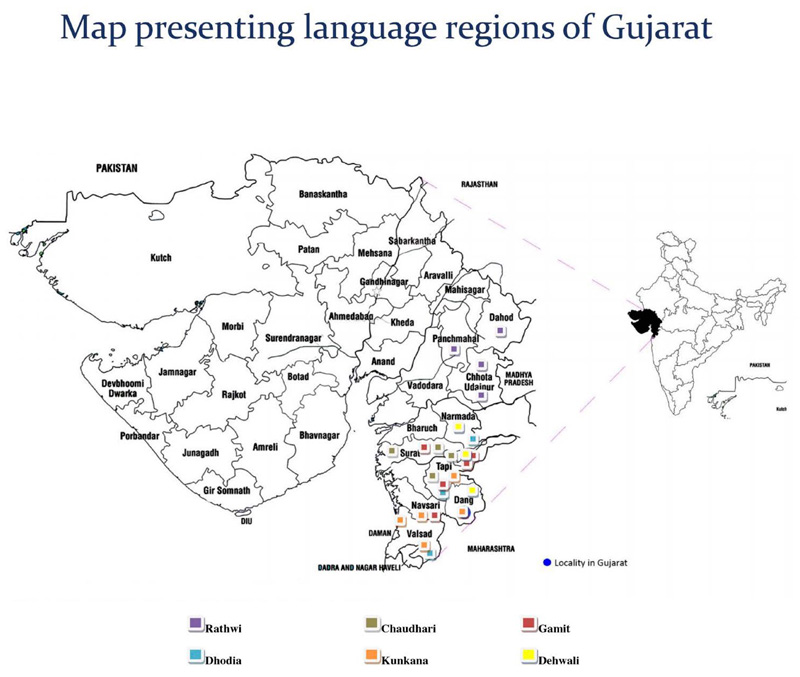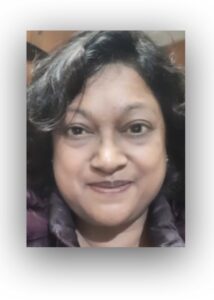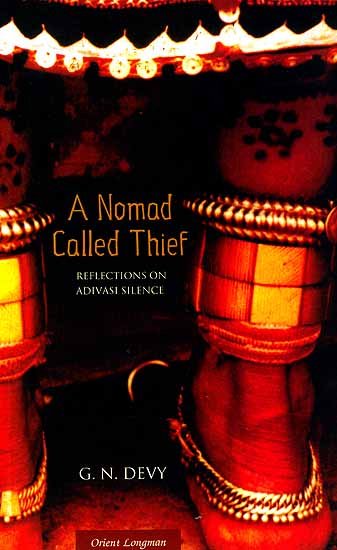Tips: 1. please be patient (reloading browser window may help); 2. click the eBook title (heading) for browsing, to Share this item and for Downloadable files; 3. to Search inside this eBook, click on the (…) Ellipses icon; 4. Zoom (+/-) to match your PC or tablet screen; 5. click the headphone icon to Read this book aloud
A story book by Kanji Patel (ed.) and by Sonal Baxi (trans.) published by Bhasha Research and Publication Centre, Vadodara © 2017 with the support of Tribal Cultural Heritage in India Foundation, Netherlands

Bhasha and its publication unit, Purva Prakash, have together documented the rich literature prevalent in these languages, their epics, narratives, theatre, music traditions and arts. Bhasha and Purva Prakash have published literary and children’s magazines, books, educational material in print and digital format in 32 Adivasi languages as well as in the major languages as Gujarati, Hindi, Marathi and English. These publications present the Adivasi imagination, knowledge systems, culture and society and have brought visibility to and understanding regarding a significant but long neglected stream of Indian literature and society.
For more information on the tribal communities of this region visit the homepage of Bhasha’s Co-Founder Prof. Ganesh Devy: https://gndevy.in/inst.html >>
Contributors: Arvind Patel, Dahyabhai Vadhu, Jeetendra Vasava, Mansing Chaudhari, Nazroo Rathwa, Urmila Gamit, Vanita Valvi
Illustrators: Chetan Parshuram Gangavane, Eknath Parshuram Gangavane, Desing Rathwa, Lalji Rathwa, Mahendra Gamit, Nazroo Rathwa
Layout and Design: Rajat Gajjar, Yash Desai and Sahana Iyer
Cover Illustration: Chetan Parshuram Gangavane and Eknath Parshuram Gangavane
- Culture and tradition play a big role in the development of any community. This is especially true of marginalized rural communities such as India’s Adivasi tribes.
- The farming practices of tribal people are truly sustainable in many ways. Their subsistence life style, local diet habits and dependence on rainfed irrigation have influenced them to cultivate and conserve the traditional cultivars or land races. The tribal communities practice a unique method of farming, known as the mixed cropping system in limited areas depending on monsoon rain. […]
- Medicinal properties of plants have been recognized and practiced by tribal communities as a tradition for thousands of years. Knowledge on some common medicinal plants of their locality is available with all the members of the community. However, the elderly members possess a great deal of knowledge of medicinal plants as well as on medicines for curing certain life threatening diseases. Tribal people use plants solely or in combination. […]
- Policy decisions, which might affect the ecological balance of biodiversity, should be taken through prior consultation of tribal people inhabiting the areas, who may help us with practical suggestions. Otherwise, ultimately the ethnic people are the worst affected in any environmental crisis, as they exist at the bottom line of social strata. Loss of biodiversity results in the loss of cultural diversity, which is the cradle of knowledge on the values of plants.
Source: “Key Takeaways” in “Conserving Tradition and Practices of Adivasi Communities in India”, National Institute of Disaster Management (NIDM.gov.in, Ministry of Home Affairs, Government of India) and Tribal Academy of Bhasa Research & Publication Centre, 14 October 2021 | Read or download the full report >>

Ādivāsi [ādibāsi] may be used in accordance with local conventions; and increasingly so for official purposes (e.g. in “Conserving Tradition and Practices of Adivasi Communities in India” published on NIDM.gov.in); Dr. Ivy Hansdak clarifies:
“Adivasi – which is derived from Sanskrit – is applied to the dark-skinned or Austro-Asiatic indigenous groups of India (usually those from Eastern India). It is a commonly-used term in Jharkhand, Bihar, West Bengal and Odisha. It is also used by the local Mongoloid tribes of North Eastern India for the migrant workers who were brought in as indentured labourers to work in tea plantations during the colonial period. ‘Tribal’ is a very broad term in the English language and includes all the different indigenous groups of India. The terms ‘indigenous’ and ‘aboriginal’ are not used often as the government claims most groups are indigenous in India. ‘Denotified Tribes’ is only used for those nomadic tribes who were notified as ‘criminal tribes’ during the British Raj [colonial rule]; later they were ‘denotified’ but still bear the stigma.” (emails dated 2020 & 2023)
Related posts

Reflections on Adivasi Silence and Voice by Ganesh [G.N.] Devy | Publications >>
Tribal communities of Gujarat: Bhil, Chaudhari, Dehwali, Dhodia, Gamit, Kathodi, Kolgha, Kotwalia, Kunkna, Padhar, Warli [Varli] | In-depth research >>
Learn more
Adivasi Academy & Museum of Adivasi Voice at Tejgadh
Bhasha | Free eBooks & Magazine: Adivasi literature and languages
eBook | Adivasi Stories from Gujarat
Endangered language | Multi-lingual education
Ganesh [G.N.] Devy | Publications | Lecture “A View of Higher Education in India”
Languages and linguistic heritage | Central Institute of Indian Languages (CIIL)
Literature and bibliographies | Literature – fiction | Poetry
People’s Linguistic Survey of India | Volumes (PLSI) | PeoplesLinguisticSurvey.org
Video | A conversation with Pradeep Marawi – Gondi artist from Bhopal
Video | Adivasi pithora artist Desing Rathwa
Video | “Nations don’t make us human – languages make us human”: Ganesh Devy
Video | South Gujarat tribal music documentation by Bhasha – Gujarat
Tips for using interactive maps
Toggle to normal view (from reader view) should the interactive map not be displayed by your tablet, smartphone or pc browser
For details and hyperlinks click on the rectangular button (left on the map’s header)
Scroll and click on one of the markers for information of special interest
Explore India’s tribal cultural heritage with the help of another interactive map >>